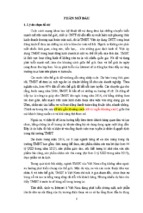of Marketing and Logistics at Cranfield School
of Mangement, a leading UK business school.
He has written numerous books and articles
and is on the editorial advisory board of several
professional journals. Until recently he was coeditor of The International Journal of Logistics
Management and his latest books have focused
upon relationship marketing, logistics and supply
chain management.
www.martin-christopher.info
In fact, the real competition today is not between companies, but between
supply chains. The winning approach to supply chains is an integrated
perspective that takes account of networks of relationships, sustainability
and product design, as well as the logistics of procurement, distribution,
and fulfilment. Logistics & Supply Chain Management examines the tools,
core processes and initiatives that ensure businesses can gain and maintain
competitive advantage.
The fourth edition has been updated and now contains four new chapters covering:
• MANAGING SUPPLY CHAIN RELATIONSHIPS
• PRODUCT DESIGN IN THE SUPPLY CHAIN
• MATCHING SUPPLY AND DEMAND
• CREATING A SUSTAINABLE SUPPLY CHAIN
‘For many years now, Martin Christopher’s book has been my default
recommendation to anyone seeking to acquire a quick yet comprehensive
grasp of supply chain issues and management. Whether you are a recent
entrant to the field or a seasoned practitioner looking for inspiration, this
book is for you!’ Bjorn Vang Jensen, Vice President, Global Logistics, Electrolux
‘You must read this book for his assessment of the challenges that lie
ahead.’ Dr John Gattorna, supply chain ‘thought leader’ and author of Dynamic
Supply Chains
‘A powerful book for executives and practitioners. It emphasises the
“end-to-end” view of supply chains, focusing on both cost efficiency and
value creation. The principles and concepts are illustrated with practical
examples and applications. It is a great contribution.’ Professor Hau Lee,
Stanford Graduate School of Business, USA
MARTIN CHRISTOPHER
LOGISTICS &
SUPPLY CHAIN
MANAGEMENT
This updated fourth edition
of the bestselling Logistics &
Supply Chain Management is
the practical guide to all the key
topics in an integrated approach
to supply chains, including:
• The link between logistics and
customer value
• Logistics and the bottom line –
measuring costs and performance
• Creating a responsive supply chain
• Managing the global pipeline
• Managing supply chain relationships
• Managing risk in the supply chain
• Matching supply and demand
MARTIN CHRISTOPHER
He has held appointments as Visiting Professor
at universities around the world. Professor
Christopher is a Fellow of The Chartered
Institute of Marketing, The Chartered Institute
of Logistics and Transport and The Chartered
Institute of Purchasing & Supply. In 1987 he
was awarded the Sir Robert Lawrence medal
of The Chartered Institute of Logistics and
Transport for his contribution to the development
of logistics education in Britain. In 2005 he was
awarded the Distinguished Service Award of
the USA Council for Supply Chain Management
Professionals. In 2007 he was designated
as Foundation Professor by The Chartered
Institute of Purchasing & Supply. Martin has also
worked as a consultant for major international
companies in North America, Europe, the Far
East and Australasia.
Effective design and management of supply chain networks can cut costs
and enhance customer value. The supply chain can be a sustainable source
of advantage in today’s turbulent global marketplace, where demand is
difficult to predict and supply chains need to be more flexible as a result.
LOGISTICS & SUPPLY CHAIN MANAGEMENT
Martin Christopher is Emeritus Professor
• Creating a sustainable supply chain
• Product design in the supply chain
MANAGEMENT
Visit our website at
www.pearson-books.com
Visit our website at
Design: Dan Mogford
www.pearson-books.com
FOURTH EDITION
Logistics & Supply
Chain Management
In an increasingly competitive world, we believe it's quality of
thinking that gives you the edge – an idea that opens new
doors, a technique that solves a problem, or an insight that
simply makes sense of it all. The more you know, the smarter
and faster you can go.
That's why we work with the best minds in business and finance
to bring cutting-edge thinking and best learning practice to a
global market.
Under a range of leading imprints, including Financial Times
Prentice Hall, we create world-class print publications and
electronic products, bringing our readers knowledge, skills and
understanding, which can be applied whether studying or at work.
To find out more about Pearson Education publications, or tell us
about the books you'd like to find, you can visit us at
www.pearsoned.co.uk
[
MARTIN CHRISTOPHER
Logistics & Supply
Chain Management
Fourth Edition
]
PEARSON EDUCATION LIMITED
Edinburgh Gate
Harlow CM20 2JE
Tel: +44 (0)1279 623623
Fax: +44 (0)1279 431059
Website: www.pearsoned.co.uk
First published in Great Britain in 1992
Second edition 1998
Third edition 2005
Fourth edition 2011
© Pearson Education Limited 2011
The right of Martin Christopher to be identified as author of this work has been asserted
by him in accordance with the Copyright, Designs and Patents Act 1988.
All rights reserved. No part of this publication may be reproduced, stored in a retrieval
system, or transmitted in any form or by any means, electronic, mechanical,
photocopying, recording or otherwise, without either the prior written permission of
the publisher or a licence permitting restricted copying in the United Kingdom issued by the
Copyright Licensing Agency Ltd, Saffron House, 6–10 Kirby Street, London EC1N 8TS.
This book may not be lent, resold, hired out or otherwise disposed of by way of trade in any
form of binding or cover other than that in which it is published, without the prior consent
of the Publishers.
All trademarks used herein are the property of their respective owners. The use of any trademark in this text
does not vest in the author or publisher any trademark ownership rights in such trademarks, nor does the
use of such trademarks imply any affiliation with or endorsement of this book by such owners.
Pearson Education is not responsible for the content of third party internet sites.
ISBN: 978-0-273-73112-2
British Library Cataloguing-in-Publication Data
A catalogue record for this book is available from the British Library
Library of Congress Cataloging-in-Publication Data
Christopher, Martin.
Logistics and supply chain management : creating value-adding networks / Martin
Christopher. -- 4th ed.
p. cm.
Includes index.
ISBN 978-0-273-73112-2 (pbk.)
1. Business logistics--Cost effectiveness. 2. Delivery of goods--Management. I.
Title.
HD38.5.C46 2011
658.5--dc22
2010033709
11 10 9 8 7 6 5 4 3 2 1
14 13 12 11 10
Typeset in Swiss Light 9.25 pt/12 pt by 30
Printed and bound in Great Britain by Henry Ling Ltd, Dorchester, Dorset
About the author
Martin Christopher is Emeritus Professor of Marketing and Logistics at Cranfield
School of Management in the United Kingdom. His work in the field of logistics
and supply chain management has gained international recognition. He has published widely and his books have been translated into many languages. Martin
Christopher co-founded the International Journal of Logistics Management and was
its joint editor for 18 years. He is a regular contributor to conferences and workshops around the world.
In addition to working with many companies in an advisory capacity he is also a
Visiting Professor at universities in the UK, Australia, Spain and Sweden.
Martin Christopher is an Emeritus Fellow of the Chartered Institute of Logistics
and Transport. He is also a Fellow of the Chartered Institute of Purchasing and
Supply and a Fellow of the Chartered Institute of Marketing. He is the recipient of
the Distinguished Service Award of the USA Council of Supply Chain Management
Professionals.
v
Contents
About the author v
Preface x
Publisher's acknowledgements xi
1
Logistics, the supply chain and competitive strategy
1
Supply chain management is a wider concept than logistics 2
Competitive advantage 4
The supply chain becomes the value chain 9
The mission of logistics management 11
The supply chain and competitive performance 13
The changing competitive environment 15
2
Logistics and customer value
27
The marketing and logistics interface 28
Delivering customer value 29
What is customer service? 31
The impact of out-of-stock 33
Customer service and customer retention 34
Market-driven supply chains 38
Defining customer service objectives 42
Setting customer service priorities 46
Setting service standards 50
3
Measuring logistics costs and performance
57
Logistics and the bottom line 58
Logistics and shareholder value 62
Logistics cost analysis 66
The concept of total cost analysis 67
Principles of logistics costing 70
Customer profitability analysis 72
Direct product profitability 78
Cost drivers and activity-based costing 80
4
Matching supply and demand
83
The lead-time gap 83
Improving the visibility of demand 85
The supply chain fulcrum 87
Forecast for capacity, execute against demand 89
Demand management and planning 89
Collaborative planning, forecasting and replenishment 94
vii
5
creating the responsive supply chain
99
Product 'push' versus demand 'pull' 104
The Japanese philosophy 109
The foundations of agility 112
A routemap to responsiveness 116
6
strategic lead-time management
121
Time-based competition 121
Lead-time concepts 125
Logistics pipeline management 129
7
the synchronous supply chain
141
The extended enterprise and the virtual supply chain 142
The role of information in the virtual supply chain 144
Laying the foundations for synchronisation 147
'Quick response' logistics 150
Production strategies for quick response 153
Logistics systems dynamics 154
8
complexity and the supply chain
159
The sources of supply chain complexity 161
The cost of complexity 165
Product design and supply chain complexity 166
Mastering complexity 167
9
Managing the global pipeline
171
The trend towards globalisation in the supply chain 173
Gaining visibility in the global pipeline 178
Organising for global logistics 180
Thinking global, acting local 184
The future of global sourcing 185
10 Managing risk in the supply chain
189
Why are supply chains more vulnerable? 190
Understanding the supply chain risk profile 193
Managing supply chain risk 198
Achieving supply chain resilience 206
11 the era of network competition
211
The new organisational paradigm 212
Collaboration in the supply chain 214
Managing the supply chain as a network 217
Seven major business transformations 218
The implications for tomorrow's logistics managers 220
viii
contents
Supply chain orchestration 222
From 3PL to 4PL™ 223
12 overcoming the barriers to supply chain integration
227
Creating the logistics vision 228
The problems with conventional organisations 228
Developing the logistics organisation 232
Logistics as the vehicle for change 236
Benchmarking 237
13 creating a sustainable supply chain
241
The triple bottom line 241
Greenhouse gases and the supply chain 243
Reducing the transport-intensity of supply chains 245
Peak oil 247
Beyond the carbon footprint 248
Reduce, reuse, recycle 250
The impact of congestion 252
14 the supply chain of the future
257
Emerging mega-trends 258
Shifting centres of gravity 259
The multi-channel revolution 261
Seeking structural flexibility 264
2020 vision 266
Index 269
contents
ix
Preface
When the first edition of this book was published in 1992, supply chain management
as an idea was still in its infancy and relatively few companies had made it a priority.
The same was true for logistics management, although its precursor, distribution
management, was increasingly being recognised as important both in terms of cost
and for its potential impact on sales.
In the intervening years from the first to the fourth edition, many things have happened. Firstly, there is now a much greater understanding of the role that supply
chain management plays in creating competitive advantage. Whereas previously
the focus was primarily tactical with a concern for optimising costs, now there is
much more of a strategic focus with the emphasis on value creation and delivery.
The second major change is the recognition that supply chain management is not
just an extension of logistics management, but rather that it is about managing
relationships across the complex networks that today's supply chains have become.
A third significant change over that period is that the business environment has
become a lot more volatile and hence less predictable. This transition from a relatively stable world to one that is much more turbulent requires supply chains to be
capable of changing rapidly to meet changed circumstances.
These changes are reflected in the additional material included in this new edition.
Thus complexity management and the challenge of making the transition from a
forecast-driven to a demand-driven business model are given greater emphasis.
As ever, I have been greatly influenced in my thinking by the ideas and contributions of colleagues. I have had the privilege over the years to work with many
academics and practitioners around the world who have provided me with inspiration as well as feedback on my ideas on how modern supply chains should be
designed and managed. Long-standing collaborators include Alan Braithwaite,
Chairman of LCP Consulting, Professor John Gattorna of Macquarie University,
Australia, Professor Douglas Lambert of Ohio State University, USA and Professor
Denis Towill of Cardiff University, UK.
More recently I have benefited greatly from sharing ideas with Dr Omera Khan of
Manchester University, UK, Dr Matthias Holweg of Cambridge University, UK and
Dr Janet Godsell and Dr Uta Jüttner, both colleagues at Cranfield University. I thank
them all.
Finally I want to thank Tracy Stickells who has skilfully managed the production
of the manuscript for this book – a complex logistics process in itself.
MARTIN CHRISTOPHER
EMERITUS PROFESSOR OF MARKETING & LOGISTICS
CENTRE FOR LOGISTICS AND SUPPLY CHAIN MANAGEMENT
CRANFIELD UNIVERSITY, UK
x
Publisher's Acknowledgements
We are grateful to the following for permission to reproduce copyright material:
Figures
Figure 1.7 from Competitive Advantage, The Free Press (Porter, M.E. 1985), Reprinted
with the permission of The Free Press, a Division of Simon & Schuster, Inc.,
from COMPETETIVE ADVANTAGE: Creating and Sustaining Superior Performance
by Michael E. Porter. Copyright © 1985, 1998 by Michael E. Porter. All rights
reserved.; Figure 1.9 from Integrating the Supply Chain, International Journal of
Physical Distribution and Materials Management, 19 (8) (Stevens, G.C. 1989),
International Journal of Physical Distribution and Logistics Management by Scott,
C. and Westbrook, R. Copyright 1991 by EMERALD GROUP PUBLISHING LIMITED.
Reproduced with permission of EMERALD GROUP PUBLISHING LIMITED in the
format Textbook via Copyright Clearance Center. ; Figure 2.2 from 'Stock-outs cause
walkouts', Harvard Business Review, May (Corsten, D. and Gruen, T. 2004); Figure
3.10 from Logistics – The Battleground of the 1990s, A.T. Kearney (Hill, G.V.); Figure
3.11 from Managing the Supply Chain: A Strategic Perspective, Macmillan Press
(Gattorna, J.L. and Walters, D.W. 1996); Figure 6.13 from 'New strategic tools for
supply chain management', International Journal of Physical Distribution of Logistics
Management, 21 (1) (Scott, C. and Westbrook, R. 1991), Emerald; Figure 9.3 from
Supply Chain Resilience, Report on behalf of the Department of Transport, Cranfield
School of Management (2003)
Tables
Table on page 74 from 'The Customer Profit Centre', Focus, 2 (2) (Hill, G.V. and
Harland, D.V. 1983), Institute of Logistics and Distribution Management; Table 10.1
from Supply Chains in a Vulnerable, Volatile World, A.T. Kearney (2003)
Text
Quote on page 136 from The Scotsman, 14/02/2007; Extract on page 160 from
The Times, 21/04/2010; Extract on page 186 from Disenchanted companies begin
moving production back to UK, The Times, 30/12/2009; Article on page 195 from
Supply Chains in a Vulnerable, Volatile World (A.T. Kearney 2003); Article on page 244
from 12,000-mile round trip to have seafood shelled, Daily Telegraph, 16/11/2006,
© Telegraph Media Group Limited 2006; Extract on page 244 from Mastering
Carbon Management: Balancing Trade-Offs to Optimise Supply Chain Efficiencies,
IBM Global Services (Butner, K., Geuder, D. and Hittner, J. 2008), Reprint courtesy
of International Business Machines Corporation, © 2008 International Business
Machines Corporation; Extract on page 252 from Supply Management, 15 February
2007, www.supplymanagement.com; Extract on page 254 from 'Intelligent Transport
Systems', Postnote, January, No. 322 (UK Parliamentary Office of Science and
xi
Technology 2009), Crown Copyright material is reproduced with permission under the
terms of the Click-Use Licence; Extract on page 260 from 'Global Trends in Energy',
The McKinsey Quarterly, January 2007 (Bozon, I.J.H., Campbell, W.J. and Lindstrand,
M.), Excerpt from “Global Trends in Energy”, January 2007, McKinsey Quarterly, www.
mckinseyquarterly.com. Copyright (c) 2010 McKinsey & Company. All rights reserved.
Reprinted by permission. ; Article on page 261 from Web-savvy housewives sabotage
efforts to save Japan's economy from stagnation, The Times, 02/04/2010
In some instances we have been unable to trace the owners of copyright material, and
we would appreciate any information that would enable us to do so.
xii
Publisher's acknowledgements
Logistics, the supply
chain and competitive
strategy
MM
1
Supply chain management is a wider concept than
logistics
MM
Competitive advantage
MM
The supply chain becomes the value chain
MM
The mission of logistics management
MM
The supply chain and competitive performance
MM
The changing competitive environment
Logistics and supply chain management are not new ideas. From the building of
the pyramids to the relief of hunger in Africa, the principles underpinning the effective flow of materials and information to meet the requirements of customers have
altered little.
Throughout the history of mankind wars have been won and lost through logistics
strengths and capabilities – or the lack of them. It has been argued that the defeat of
the British in the American War of Independence can largely be attributed to logistics
failure. The British Army in America depended almost entirely upon Britain for supplies. At the height of the war there were 12,000 troops overseas and for the most
part they had not only to be equipped, but fed from Britain. For the first six years of
the war the administration of these vital supplies was totally inadequate, affecting the
course of operations and the morale of the troops. An organisation capable of supplying the army was not developed until 1781 and by then it was too late.1
In the Second World War logistics also played a major role. The Allied Forces’
invasion of Europe was a highly skilled exercise in logistics, as was the defeat
of Rommel in the desert. Rommel himself once said that ‘… before the fighting
proper, the battle is won or lost by quartermasters’.
1
It is only in the recent past that business organisations have come to recognise
the vital impact that logistics management can have in the achievement of
competitive advantage.
However, whilst the Generals and Field Marshals from the earliest times have
understood the critical role of logistics, strangely it is only in the recent past that
business organisations have come to recognise the vital impact that logistics management can have in the achievement of competitive advantage. Partly this lack of
recognition springs from the relatively low level of understanding of the benefits of
integrated logistics. As early as 1915, Arch Shaw pointed out that:
The relations between the activities of demand creation and physical supply …
illustrate the existence of the two principles of interdependence and balance.
Failure to co-ordinate any one of these activities with its group-fellows and also
with those in the other group, or undue emphasis or outlay put upon any one
of these activities, is certain to upset the equilibrium of forces which means
efficient distribution.
… The physical distribution of the goods is a problem distinct from the
creation of demand … Not a few worthy failures in distribution campaigns
have been due to such a lack of co-ordination between demand creation and
physical supply …
Instead of being a subsequent problem, this question of supply must be met
and answered before the work of distribution begins.2
It is paradoxical that it has taken almost 100 years for these basic principles of
logistics management to be widely accepted.
What is logistics management in the sense that it is understood today?
There are many ways of defining logistics but the underlying concept might be
defined as:
Logistics is the process of strategically managing the procurement, movement and storage of materials, parts and finished inventory (and the related
information flows) through the organisation and its marketing channels in
such a way that current and future profitability are maximised through the
cost-effective fulfilment of orders.
This basic definition will be extended and developed as the book progresses, but it
makes an adequate starting point.
Supply chain management is a wider concept
than logistics
Logistics is essentially a planning orientation and framework that seeks to create
a single plan for the flow of products and information through a business. Supply
chain management builds upon this framework and seeks to achieve linkage and
co-ordination between the processes of other entities in the pipeline, i.e. suppliers
2
LOGISTICS & SUPPLY CHAIN MANAGEMEN T
and customers, and the organisation itself. Thus, for example, one goal of supply
chain management might be to reduce or eliminate the buffers of inventory that
exist between organisations in a chain through the sharing of information on
demand and current stock levels.
It will be apparent that supply chain management involves a significant change
from the traditional arm’s-length, even adversarial, relationships that so often
typified buyer/supplier relationships in the past. The focus of supply chain management is on co-operation and trust and the recognition that, properly managed,
the ‘whole can be greater than the sum of its parts’.
The definition of supply chain management adopted in this book is:
The management of upstream and downstream relationships with suppliers
and customers in order to deliver superior customer value at less cost to the
supply chain as a whole.
Thus the focus of supply chain management is upon the management of relationships in order to achieve a more profitable outcome for all parties in the chain. This
brings with it some significant challenges since there may be occasions when the
narrow self-interest of one party has to be subsumed for the benefit of the chain as
a whole.
Whilst the phrase ‘supply chain management’ is now widely used, it could be
argued that it should really be termed ‘demand chain management’ to reflect the
fact that the chain should be driven by the market, not by suppliers. Equally the
word ‘chain’ should be replaced by ‘network’ since there will normally be multiple
suppliers and, indeed, suppliers to suppliers as well as multiple customers and
customers’ customers to be included in the total system.
Figure 1.1 illustrates this idea of the firm being at the centre of a network of suppliers and customers.
Figure 1.1 The supply chain network
Extending this idea it has been suggested that a supply chain could more accurately be defined as:
LOGISTIC S, THE SUPPLY CHAIN AND COMPETITIVE STRATEGY
3
A network of connected and interdependent organisations mutually and
co-operatively working together to control, manage and improve the flow of
materials and information from suppliers to end users.
Source: J. AITkEn3
Competitive advantage
A central theme of this book is that effective logistics and supply chain management can provide a major source of competitive advantage – in other words a
position of enduring superiority over competitors in terms of customer preference
may be achieved through better management of logistics and the supply chain.
The foundations for success in the marketplace are numerous, but a simple
model is based around the triangular linkage of the company, its customers and its
competitors – the ‘Three Cs’. Figure 1.2 illustrates the three-way relationship.
Figure 1.2 Competitive advantage and the ‘Three Cs’
Customers
Needs seeking benefits
at acceptable prices
Va
l
ue
l
Va
Assets and
utilisation
ue
Cost
differentials
Company
Assets and
utilisation
Competitor
Source: Ohmae, k., The Mind of the Strategist, Penguin Books, 1983
The source of competitive advantage is found firstly in the ability of the organisation to differentiate itself, in the eyes of the customer, from its competition, and
secondly by operating at a lower cost and hence at greater profit.
Seeking a sustainable and defensible competitive advantage has become the
concern of every manager who is alert to the realities of the marketplace. It is no
longer acceptable to assume that good products will sell themselves, neither is it
advisable to imagine that success today will carry forward into tomorrow.
Let us consider the bases of success in any competitive context. At its most
elemental, commercial success derives from either a cost advantage or a value
advantage or, ideally, both. It is as simple as that – the most profitable competitor
in any industry sector tends to be the lowest-cost producer or the supplier providing a product with the greatest perceived differentiated values.
4
LOGISTICS & SUPPLY CHAIN MANAGEMEN T
Put very simply, successful companies either have a cost advantage or they
have a value advantage, or – even better – a combination of the two. Cost advantage gives a lower cost profile and the value advantage gives the product or
offering a differential ‘plus’ over competitive offerings.
Let us briefly examine these two vectors of strategic direction.
1 Cost advantage
In many industries there will typically be one competitor who will be the low-cost
producer and often that competitor will have the greatest sales volume in the
sector. There is substantial evidence to suggest that ‘big is beautiful’ when it
comes to cost advantage. This is partly due to economies of scale, which enable
fixed costs to be spread over a greater volume, but more particularly to the impact
of the ‘experience curve’.
The experience curve is a phenomenon with its roots in the earlier notion of
the ‘learning curve’. Researchers in the Second World War discovered that it was
possible to identify and predict improvements in the rate of output of workers as
they became more skilled in the processes and tasks on which they were working.
Subsequent work by Boston Consulting Group, extended this concept by demonstrating that all costs, not just production costs, would decline at a given rate as
volume increased (see Figure 1.3). In fact, to be precise, the relationship that the
experience curve describes is between real unit costs and cumulative volume.
Real costs per unit
Figure 1.3 The experience curve
Cumulative volume
Traditionally it has been suggested that the main route to cost reduction was
through the achievement of greater sales volume and in particular by improving
market share. However, the blind pursuit of economies of scale through volume
increases may not always lead to improved profitability – the reason being that
in today’s world much of the cost of a product lies outside the four walls of the
business in the wider supply chain. Hence it can be argued that it is increasingly
through better logistics and supply chain management that efficiency and productivity can be achieved leading to significantly reduced unit costs. How this can be
achieved will be one of the main themes of this book.
LOGISTIC S, THE SUPPLY CHAIN AND COMPETITIVE STRATEGY
5
Logistics and supply chain management can provide a multitude of ways
to increase efficiency and productivity and hence contribute significantly to
reduced unit costs.
2 Value advantage
It has long been an axiom in marketing that ‘customers don’t buy products, they
buy benefits’. Put another way, the product is purchased not for itself but for the
promise of what it will ‘deliver’. These benefits may be intangible, i.e. they relate
not to specific product features but rather to such things as image or service. In
addition, the delivered offering may be seen to outperform its rivals in some functional aspect.
Unless the product or service we offer can be distinguished in some way from
its competitors there is a strong likelihood that the marketplace will view it as a
‘commodity’ and so the sale will tend to go to the cheapest supplier. Hence the
importance of seeking to add additional values to our offering to mark it out from
the competition.
What are the means by which such value differentiation may be gained?
Essentially the development of a strategy based upon added values will normally
require a more segmented approach to the market. When a company scrutinises
markets closely it frequently finds that there are distinct ‘value segments’. In other
words, different groups of customers within the total market attach different importance to different benefits. The importance of such benefit segmentation lies in
the fact that often there are substantial opportunities for creating differentiated
appeals for specific segments. Take the car industry as an example. Most volume
car manufacturers such as Toyota or Ford offer a range of models positioned at
different price points in the market. However, it is increasingly the case that each
model is offered in a variety of versions. Thus at one end of the spectrum may be
the basic version with a small engine and two doors and at the other end, a fourdoor, high-performance version. In between are a whole variety of options, each of
which seeks to satisfy the needs of quite different ‘benefit segments’. Adding value
through differentiation is a powerful means of achieving a defensible advantage in
the market.
Equally powerful as a means of adding value is service. Increasingly it is the
case that markets are becoming more service-sensitive and this of course poses
particular challenges for logistics management. There is a trend in many markets
towards a decline in the strength of the ‘brand’ and a consequent move towards
‘commodity’ market status. Quite simply this means that it is becoming progressively more difficult to compete purely on the basis of brand or corporate image.
Additionally, there is increasingly a convergence of technology within product categories, which means that it is often no longer possible to compete effectively on the
basis of product differences. Thus the need to seek differentiation through means
other than technology. Many companies have responded to this by focusing upon
service as a means of gaining a competitive edge. Service in this context relates to
6
LOGISTICS & SUPPLY CHAIN MANAGEMEN T
the process of developing relationships with customers through the provision of an
augmented offer. This augmentation can take many forms including delivery service, after-sales services, financial packages, technical support and so forth.
Seeking the high ground
In practice what we find is that the successful companies will often seek to achieve
a position based upon both a cost advantage and a value advantage. A useful
way of examining the available options is to present them as a simple matrix. Let
us consider these options in turn.
High
Service
leader
Cost and
service leader
Low
Value advantage
Figure 1.4 Logistics and competitive advantage
Commodity
market
Cost
leader
Low
High
Cost advantage
For companies who find themselves in the bottom left-hand corner of our matrix
(Figure 1.4) the world is an uncomfortable place. Their products are indistinguishable
from their competitors’ offerings and they have no cost advantage. These are typical commodity market situations and ultimately the only strategy is either to move to
the right of the matrix, i.e. to cost leadership, or upwards towards service leadership.
Often the cost leadership route is simply not available. This particularly will be the
case in a mature market where substantial market share gains are difficult to achieve.
new technology may sometimes provide a window of opportunity for cost reduction
but in such situations the same technology is often available to competitors.
Cost leadership strategies have traditionally been based upon the economies
of scale gained through sales volume. This is why market share is considered to
be so important in many industries. However, if volume is to be the basis for cost
leadership then it is preferable for that volume to be gained early in the market life
cycle. The ‘experience curve’ concept, briefly described earlier, demonstrates the
value of early market share gains – the higher your share relative to your competitors the lower your costs should be. This cost advantage can be used strategically
to assume a position of price leader and, if appropriate, to make it impossible
for higher-cost competitors to survive. Alternatively, price may be maintained,
LOGISTIC S, THE SUPPLY CHAIN AND COMPETITIVE STRATEGY
7
- Xem thêm -





















